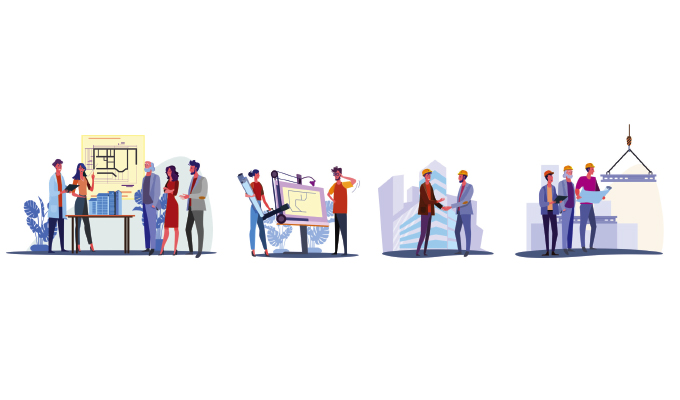In part 1 of this article, we discussed the trends of remote working for both large organizations and small and medium-size businesses (SMBs). We discussed that while we anticipate the return of on-premises work for large enterprises, we foresee that remote work is here to stay in SMBs. We laid out the challenges for the distributed and remote workforce. In this second article, we will delve into the aspects of remote work that must be addressed to make it a successful option for both the business and the employee.
REMOTE WORK CHALLENGES
The first challenge to a successful remote work environment is to ensure trust between employees and management. Employees are expected to keep themselves productive and speak up when their productivity is threatened, while employers are trusted to streamline the work for their teams. This is the cornerstone in keeping a remote work force motivated to be productive.
The second challenge is keeping the organization secure. Today, there are myriad cyber-security related issues that arise when resources are distributed not just in a single country but across the globe and in multiple time zones.
Remote work force challenges have been written about extensively since the onset of the pandemic. What’s interesting is most of the articles address these issues from a management standpoint. The concerns for remote staff are different, but no less important. We’re reminded of the character Maria from the story ‘In the Cart’ by Anton Chekov. The primary focus of the story is the loneliness felt by Maria. Remote working can leave employees feeling disconnected, left to complete tedious tasks, lacking support and feeling lonely. However, effective collaboration and employee motivation can address these factors, helping employees be even more productive than if they were in an office setting.
TEAM BUILDING IS KEY
Collaboration is not just participating in video conferences and using chat tools like Teams, Slack and expecting things to be like they were in an in-person setting. Businesses should have policy and budget in place to make remote work successful. One extremely important challenge that is not given enough attention is team building. All of the people that need to work with each other need to know one another. In an on-premises setting, this happens naturally. Occasional breaks and lunch hour are some of the times when people make those inter-personal connections. It is imperative that management creates opportunities for remote employees to meet with one another on an almost daily basis. This should not and must not be limited to daily standups alone.
Team building should start at the time of on-boarding where all current employees are introduced to the new hire in both a group and then a one-on-one setting. Opportunities should be created for employees to meet and collaborate on their own without the virtual presence of the lead/manager.
Semi-competitive team building activities also have a way of keeping employees engaged with each other in a format that is not strictly related to work. Fantasy football leagues, march madness bracket tournaments, and super bowl squares are seasonal activities that keeps employees connected with each other, whether it be to keep up with the latest winning score or to work on fantasy team trade deals.
SET BOUNDARIES
Another simple yet effective suggestion for remote workforces is creating a schedule. Having a set of times that the entire team is expected to work helps. The other important factor is employee motivation. The need to be recognized is ingrained in every human. Employees that are treated as valuable to the team, with their contributions recognized will be the most successful. When possible, leads need to meet one-on-one either virtually, or if possible, in-person to hear employee concerns and provide direct feedback on the work done by the remote employee.
CYBERSECURITY
This now leads us to the second focal point of this article which is cybersecurity. The existence of a remote workforce increases the electronic device end-point footprint that greatly adds to the risk and threat to network security. Cyber threats are pervasive and here to stay. Companies have no breathing room to relax and address them later. From phishing to ransomware, networks are continuously being assessed for holes and when hackers gain access, they can cause enormous damage. The damage to a company’s reputation after a security breach can be long lasting and sometimes debilitating.
The first level of offense is a strong defense. Strong password enforcement with a 90-day reset is a good start. MFA or 2-factor authentication should be the default. Email and data encryption must be enabled. Enable antivirus protection on end user devices and have scheduled (not manual) periodic (preferably daily) scans. All employees should work through a VPN. Enable firewalls with clear allow and not-allow lists that are regularly reviewed. And, revoking access to off-boarded employees is important. Active employees should have privileges based on roles and groups, to be reviewed periodically.
CLOSING THOUGHT
Workplaces and their employees have encountered a great amount of change since the onset of the pandemic. These issues continue to evolve as organizations look at what is best for productivity as well as what is best for its workforce. Of paramount importance is a workplace that creates an environment where employees feel psychologically safe, engaged, and happy.
About the Authors:
Hari Vasudevan is the founder and CEO of Think Power Solutions. Vamsi Alla is the chief technology officer of Think Power Solutions. Jesse Guzman is the director of PMO at Think Power Solutions. Think Power Solutions is a leading tech-enabled infrastructure management solutions provider with highly skilled and dedicated consultants who clients entrust to manage their mission-critical infrastructure. Think Power Solutions was founded with the vision of providing exceptional client service influenced by modern technology to positively impact the utilities, telecom, and construction industries. For more, visit thinkpowersolutions.com.
Modern Contractor Solutions, February 2022
Did you enjoy this article?
Subscribe to the FREE Digital Edition of Modern Contractor Solutions magazine.



